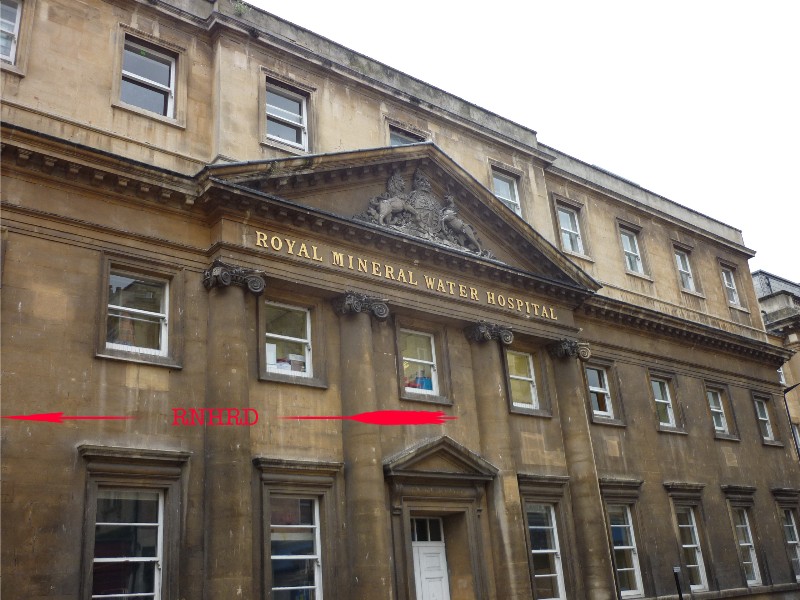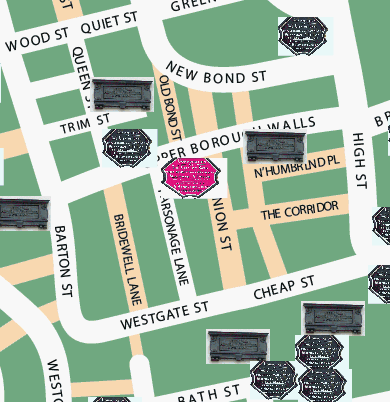Royal National Hospital for Rheumatic Diseases
What is it?
In 1597, an Act of Parliament received the Royal Assent, by which
a
right to the free use of the BATHS OF BATH was given to the
"diseased
and impotent poor of England". These acts caused the city to be
inundated with beggars and, in 1714, the Act was repealed - but
the
"beggarly stream still continued to flow". In order to control
this
problem but still offer support to those genuinely in need, the
establishment of a Hospital for their reception was mooted. A
public
subscription was opened in 1723 and King George II was one of the
first
subscribers, giving £200 (worth £30,000 in 2011 values) [
Brabazon 1888].
In 1738,
John Wood produced
completed
designs for the Hospital to be erected on the site of a theatre.
Beau Nash was requested to take them to
London
for the inspection of the King and the Royal Family.
Ralph Allen offered a free supply of Bath
stone
to build the Hospital.
Dr William Oliver
was
one of the founding physicians at the hospital.
Queen Victoria conferred the 'Royal' title in 1888. The building
was sold to a developer in 2016 and the last patients moved out in
2018. The money raised was used to build a new facility on the
main Bath hospital site:
https://ruh.nhs.uk/RNHRD/
Planning permission has been obtained to convert the buildings
into a hotel, with the most recent permission dated 1st July 2025
(see
https://app.bathnes.gov.uk/webforms/planning/details.html?refval=25%2F00415%2FVAR#documents_Section).
The conversion was planned to last two years, opening sometime in
2027.
Where is it in Bath?
The building on the junction of Union Street and Upper Borough
Walls.

The east wall of the building on Union Street contains the
following
inscription:

The text reads
"Royal National Hospital for Rheumatic Diseases
Royal Mineral Water Hospital
Established by Act of Parliament as The Hospital or Infirmary in
the
City of Bath A.D. 1739"
Location map of inscription:

(c) 2025
Bath-Heritage.co.uk | Contact us|




